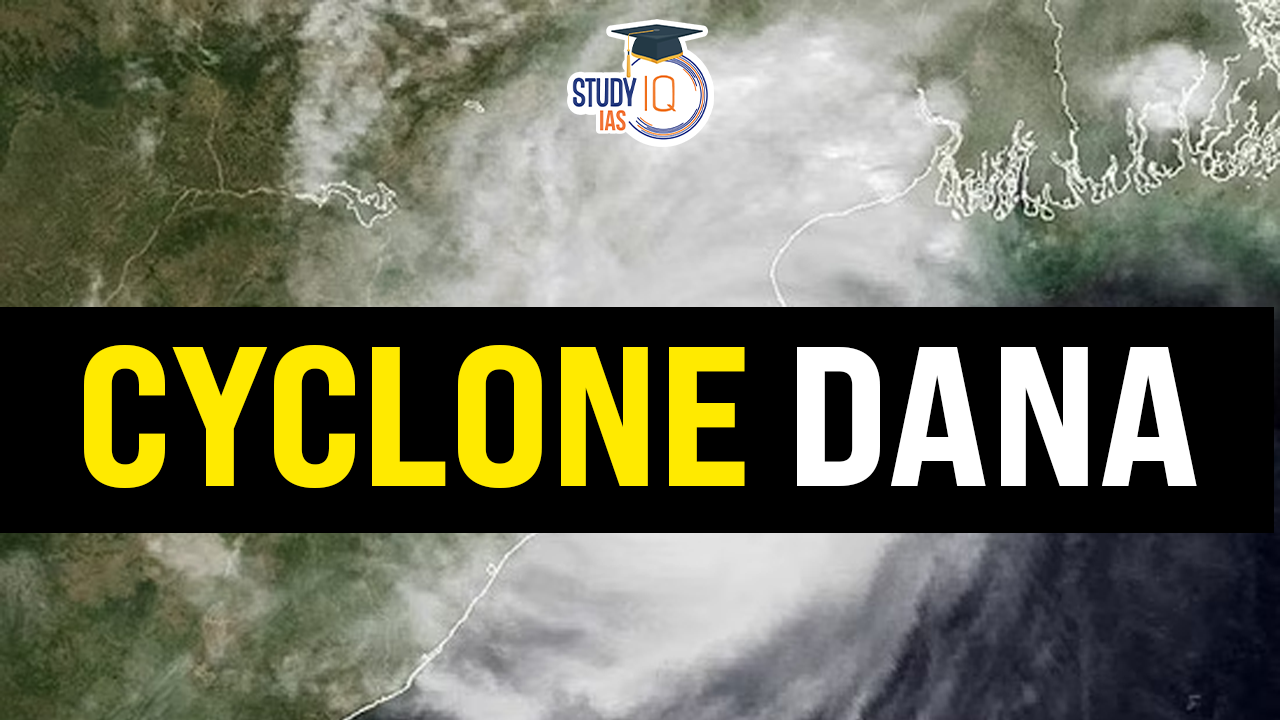Table of Contents
Cyclone Dana, which formed over the Bay of Bengal, is expected to make landfall in Odisha near Bhitarkanika and Dhamra as a severe cyclonic storm between late Thursday night and early Friday, according to the Indian Meteorological Department (IMD). The storm is predicted to bring wind speeds of 100-120 km/h, along with heavy rainfall, particularly affecting Odisha and West Bengal.
What is Cyclone Dana?
Cyclones are intense circular storm systems characterized by low atmospheric pressure, high winds, and heavy rain. Cyclone Dana originated from an upper-air circulation over the Bay of Bengal, intensifying into a severe cyclonic storm as it approached the Indian coastline. According to the India Meteorological Department (IMD), Cyclone Dana is expected to bring heavy rainfall, strong winds, and potential flooding in the coastal regions.
Cyclone Dana Formation and Development
- Initial Stages: Cyclone Dana formed from a low-pressure area over the Bay of Bengal, which intensified due to favorable atmospheric conditions, including warm sea surface temperatures and low wind shear.
- Forecasts by IMD: The IMD has been closely monitoring the cyclone’s trajectory and has predicted that it will cross the north Odisha and West Bengal coasts, particularly between Puri and Sagar Island, with wind speeds ranging from 100 to 120 kmph.
Cyclone Dana Latest Update
Cyclone Dana, which has developed in the Bay of Bengal, is expected to bring heavy rainfall and potentially severe weather to Odisha and West Bengal. The Indian Meteorological Department (IMD) has predicted that the cyclone will likely make landfall between October 24 and 26. Both coastal and interior regions of Odisha and southern West Bengal are at risk of significant rainfall, along with potential flooding in low-lying areas and landslides in hilly regions.
Odisha is expected to experience maximum rainfall around October 24, with urban areas and rivers being particularly vulnerable to flooding. West Bengal, especially its southern districts, is also forecasted to face heavy rains and potential flooding during this period. Authorities in both states are closely monitoring the situation and have urged residents to remain cautious.
Impact on Odisha and West Bengal of Cyclone Dana
Heavy Rainfall and Flooding
The cyclone is forecasted to bring heavy to very heavy rainfall, which can lead to flooding, particularly in low-lying areas. Districts in Odisha, including Balasore, Bhadrak, and Ganjam, are expected to experience significant rainfall, leading to potential disruption in normal life and infrastructure damage.
Wind Damage
Wind speeds of up to 120 kmph can cause severe damage to structures, uproot trees, and disrupt power supply. The IMD has advised local authorities to prepare for such eventualities, including potential evacuations in high-risk areas.
Economic Implications
The impact of Cyclone Dana on agriculture, fisheries, and local economies could be significant. The fishing community has been advised against venturing into the sea, which will affect livelihoods. Additionally, flooding can destroy crops and damage infrastructure, leading to long-term economic repercussions.
Preparedness and Response Measures
Government Initiatives
- Evacuation Plans: The Odisha government has initiated evacuation plans for vulnerable populations in coastal districts. Special attention is being given to pregnant women and those living in makeshift homes.
- Disaster Management Protocols: The State Revenue and Disaster Management Minister has reassured the public about the preparedness of the administration to handle the cyclone. District collectors have been instructed to monitor vulnerable pockets and ensure prompt evacuations if necessary.
- Public Awareness Campaigns: The government has launched awareness campaigns to inform residents about safety measures, including how to prepare for the cyclone and respond to potential emergencies.
Role of the India Meteorological Department
The IMD plays a critical role in providing timely updates and forecasts related to Cyclone Dana. Its real-time data and tracking systems enable state authorities to implement necessary precautions effectively. Regular updates help keep the public informed, reducing panic and encouraging proactive measures.
Cyclone Dana UPSC
Cyclone Dana presents significant challenges to the coastal states of Odisha and West Bengal. For UPSC aspirants, it is vital to understand the meteorological, social, and economic dimensions of such natural disasters. Studying the government’s response and the effectiveness of disaster management strategies offers valuable insights into the resilience of communities facing climate-related challenges.


 Bihar Assembly Election 2025 Dates, Poli...
Bihar Assembly Election 2025 Dates, Poli...
 Bharat Bandh 9 July 2025: Over 25 Crore ...
Bharat Bandh 9 July 2025: Over 25 Crore ...
 Sukhoi Su-57: Will India Choose Russia�...
Sukhoi Su-57: Will India Choose Russia�...





















